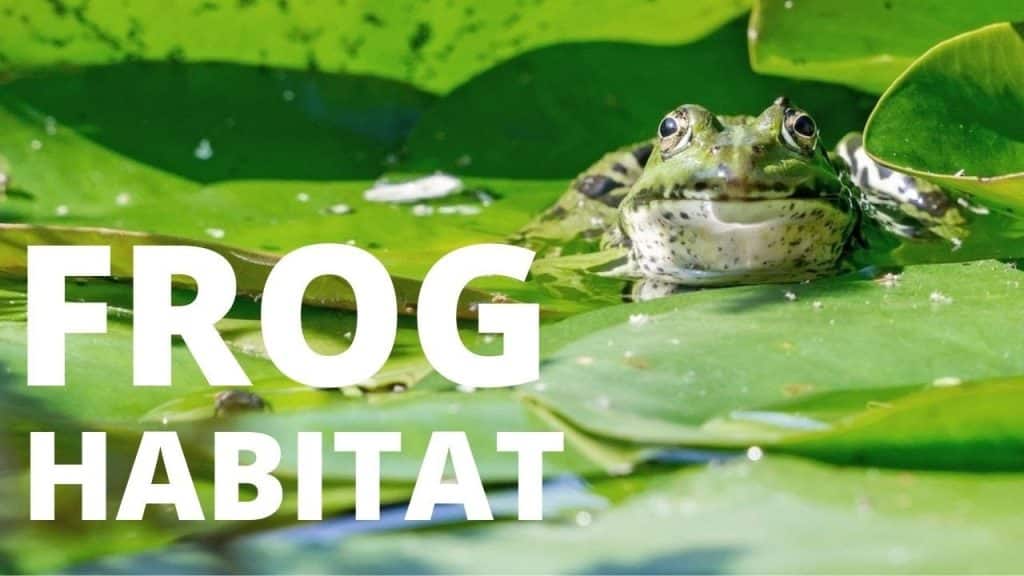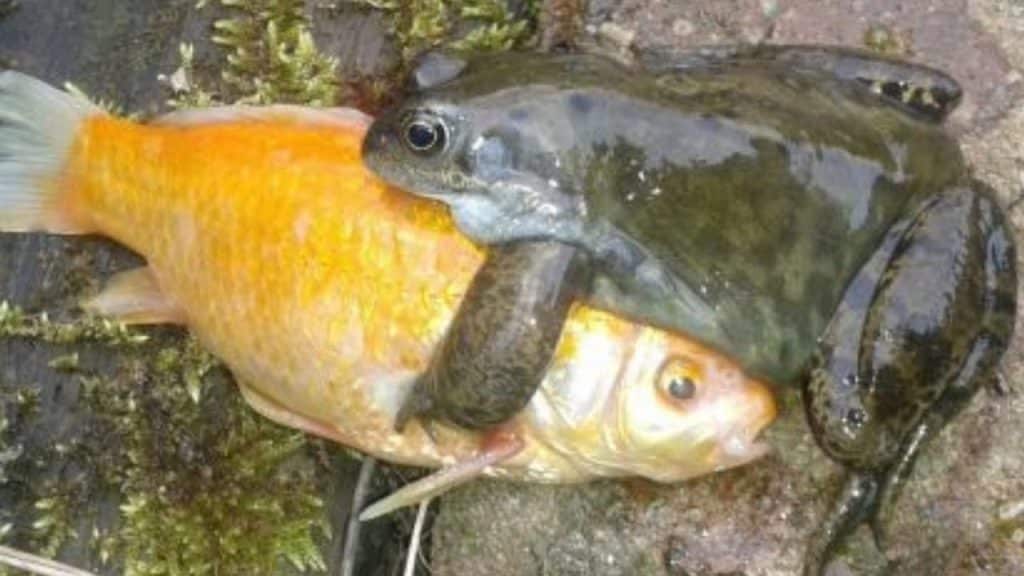Have you ever wondered if frog dads really protect their tadpoles? You may have seen popular videos like “Bullfrog Dad Protects His Tadpoles” that show frog parents caring for their young. But is this behavior common among all frog species? Well, the truth is, there are over 7,400 known frog species worldwide, and most of them actually lay their eggs and leave them. However, there are exceptions to this general rule, such as the male African bullfrog who remains with his tadpoles to ensure they have water, or poison dart frogs that lay their eggs in little puddles and return to feed their tadpoles until they become froglets. One of the most famous frog dads known to care for their tadpoles is the Darwin frog, which ingests the tadpoles and keeps them safe until they can hop out. These unique behaviors are often linked to the environment and living conditions of the frogs. If you’re interested in learning more about these fascinating amphibians, this video by Toads N Frogs is here to educate and demystify frogs and toads, encouraging respect and a better understanding of these awesome animals.

Observing Frog Parental Care
When it comes to the care of their offspring, frogs exhibit a remarkable diversity of parental behaviors. While the majority of frog species practice a lay-and-leave strategy, leaving their eggs to develop on their own, there are several exceptions to this general rule. These exceptions have captured the attention of scientists and nature enthusiasts alike, leading to fascinating observations of protective frog parents. Through documentary and video evidence, we have gained valuable insights into the variability of parental care among frog species.
Frog Dads in Action
Case studies of frog fathers’ involvement
The involvement of frog fathers in parental care has been a subject of interest for researchers. One such case study involves the African Bullfrog (Pyxicephalus adspersus). These frog dads are known for their dedicated care of their tadpoles, staying with them to ensure their survival. African Bullfrogs demonstrate a unique and protective parental behavior that deviates from the general lay-and-leave strategy.
African Bullfrog as a protective parent
Male African Bullfrogs are responsible for creating and maintaining burrows, where they lay their eggs. After the eggs hatch into tadpoles, the male remains with them, providing protection and ensuring their access to water. This behavior is crucial for the tadpoles’ survival, as the male African Bullfrog guards them from predators and maintains the necessary moisture levels in their environment.
Role of male poison dart frogs in offspring care
Another intriguing example of frog paternal care can be observed in poison dart frogs (Dendrobatidae). These vibrant and often toxic frogs exhibit behaviors that deviate from the typical lay-and-leave approach. Male poison dart frogs play an active role in caring for their offspring.
The African Bullfrog Phenomenon
Behavioral traits of male African Bullfrogs
Male African Bullfrogs exhibit a range of behaviors that are essential for the survival of their tadpoles. Beyond protecting them from predators and ensuring access to water, they also actively defend their tadpoles’ territory. These behaviors showcase the dedication and importance of fathers in the survival of their offspring.
Adaptations for tadpole survival
The protective behaviors of male African Bullfrogs have evolutionary roots. They have developed adaptations that promote the survival of their tadpoles, such as strong vocalizations to communicate and defend their territory. Additionally, the burrows created by male African Bullfrogs provide a safe and moist environment for the tadpoles to develop.
Implications of the PBS documentary “Bullfrog Dad Protects His Tadpoles”
The PBS documentary “Bullfrog Dad Protects His Tadpoles” sheds light on the remarkable parental behaviors of African Bullfrogs. By showcasing the dedication of these frog fathers, the documentary highlights the complexity and diversity of parental care among frog species. It serves as a valuable resource for understanding the ecological roles and importance of protective fathers.
Poison Dart Frogs’ Parenting Strategies
Unique ways poison dart frogs care for their young
Many species of poison dart frogs exhibit unique parenting strategies. Instead of simply laying their eggs and leaving, these frogs engage in behaviors that ensure the survival of their offspring. One such behavior is the creation of small pools or puddles within their territory, where they lay their eggs.
Returning to feed tadpoles: A rare behavior
A fascinating aspect of poison dart frog parenting is their dedicated return to the pools or puddles where they have laid their eggs. This behavior allows them to provide sustenance to their developing tadpoles until they undergo metamorphosis and become froglets.
The significance of ‘egg-feeding’
Poison dart frogs have also been observed to engage in a behavior known as ‘egg-feeding.’ This involves providing unfertilized eggs for their tadpoles to consume. This unique form of parental care ensures a steady food source for the growing tadpoles and contributes to their successful development.
Darwin’s Frog: Unique Tadpole Rearing
Internal tadpole rearing of the Darwin Frog
One of the most fascinating examples of unique tadpole care is seen in the Darwin Frog (Rhinoderma darwinii). In this species, the male frog ingests the eggs laid by the female, keeping them safe inside his vocal sac until they develop into tadpoles.
The fascinating lifecycle from egg to froglet
After the tadpoles develop inside the male Darwin Frog’s vocal sac, they are then released through his mouth. The male frog ensures their survival by providing a safe and moist environment within his vocal sac, protecting them from predators and fluctuations in temperature.
Evolutionary benefits of the Darwin Frog’s strategy
The unique tadpole rearing behavior of the Darwin Frog offers evolutionary advantages. By keeping the developing tadpoles inside his vocal sac, the male frog maximizes their chances of survival while minimizing exposure to potential threats. This strategy contributes to the species’ overall reproductive success.
Species With No Parental Care
Most frogs’ approach: Lay and leave
Although some frog species exhibit dedicated parental care, the majority of frogs practice a lay-and-leave strategy. These frogs lay their eggs in suitable environments and do not provide any further care or protection to their offspring.
Survival strategies without parental involvement
Frogs that employ the lay-and-leave strategy have evolved various survival strategies to compensate for the lack of parental care. These include laying large numbers of eggs to increase the chances of survival and selecting suitable larval habitats that offer optimal conditions for development.
Contrasting reproductive tactics
The different reproductive tactics seen across frog species reflect the diverse selection pressures and ecological contexts in which they exist. While some species have evolved elaborate parental behaviors, others have relied on alternative strategies to ensure the survival and perpetuation of their offspring.
Environmental Influences on Frog Parenting
How habitat affects parental behavior
The parental behavior of frogs is strongly influenced by their habitat. Different habitats present varying challenges and opportunities, which in turn shape the evolution of parental care strategies. For example, frogs living in environments with abundant predators may have a greater need for protective behaviors to increase the survival of their offspring.
Adaptative strategies for different ecosystems
Frogs have adapted their parental strategies to suit the unique conditions of their ecosystems. This includes adapting to variations in water availability, temperature fluctuations, and the presence of specific predators or competitors. By adjusting their behaviors to these environmental factors, frogs increase the chances of successful reproduction.
Parental care as a response to ecological pressures
The presence or absence of parental care in frogs is a result of ecological pressures and trade-offs. The evolution of parental care is influenced by factors such as resource availability, predation risk, and competition for resources. These pressures shape the behaviors and strategies that frogs adopt in order to increase their reproductive success.
The Benefits of Paternal Care
Increased survival rates of tadpoles
One of the primary benefits of paternal care in frogs is the increased survival rates of tadpoles. By actively protecting and providing for their offspring, frog fathers enhance their chances of reaching adulthood. This increased survival contributes to the overall population success of the species.
Genetic advantages of protective fathers
Paternal care also offers genetic advantages for the offspring. By choosing partners that exhibit parental care behaviors, females can ensure the transmission of beneficial genetic traits to their offspring. This selection process enhances the genetic diversity and adaptability of future generations.
Long-term impact on species success
The presence of paternal care behaviors in frog species has long-term implications for their success and survival. Species that exhibit protective paternal care may have a higher likelihood of adapting to changing environmental conditions, increasing their chances of long-term persistence.
Adaptations for Tadpole Protection
Morphological changes in protective frog dads
Protective frog fathers have evolved various morphological adaptations to enhance the survival of their tadpoles. These adaptations include vocal sacs for carrying eggs or tadpoles, specialized skin textures or colors for camouflage, and physical structures for creating burrows or pools.
Behavioral adaptations for tadpole survival
In addition to morphological adaptations, frog dads also exhibit behavioral adaptations that contribute to tadpole survival. These behaviors include territorial defense, predator avoidance strategies, nest maintenance, and the retrieval of food resources for their offspring.
The trade-offs of paternal care
While paternal care offers numerous benefits, it also comes with trade-offs. Engaging in parental care requires energy expenditure and may limit the individual’s ability to engage in other activities, such as foraging or mating. These trade-offs highlight the delicate balance that exists in the evolution of parental care strategies.
Conclusion
The observation of frog parental care has provided us with invaluable insights into the complexity of tadpole protection. From the dedicated fathers of African Bullfrogs to the unique behaviors of poison dart frogs and Darwin’s Frog, we have witnessed the remarkable adaptability and diversity of parental care in frogs. These behaviors are not only fascinating but also carry important ecological roles and contribute to the overall success of frog species. By encouraging a broader understanding of amphibian behavior, we can foster greater respect and appreciation for these incredible creatures.



